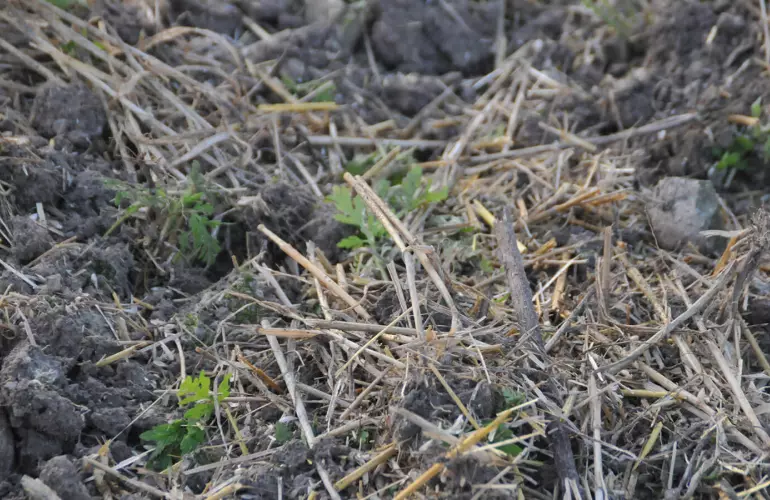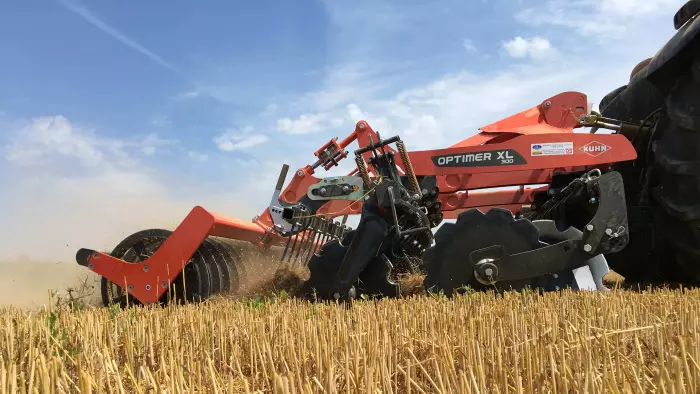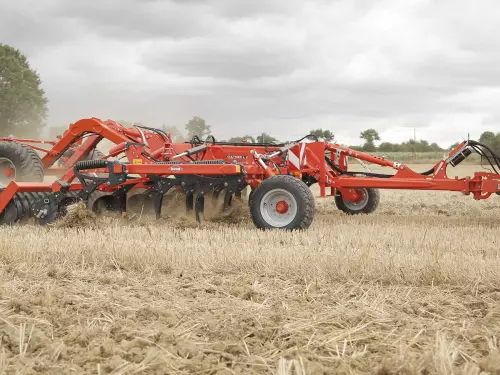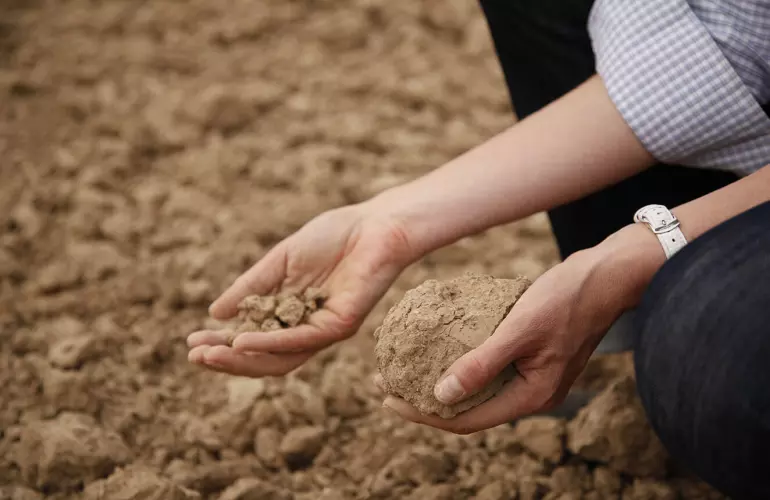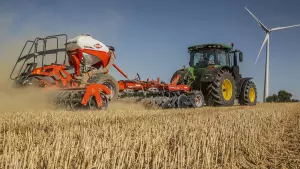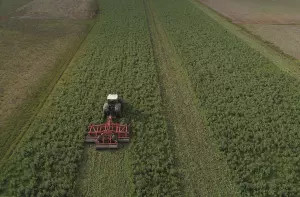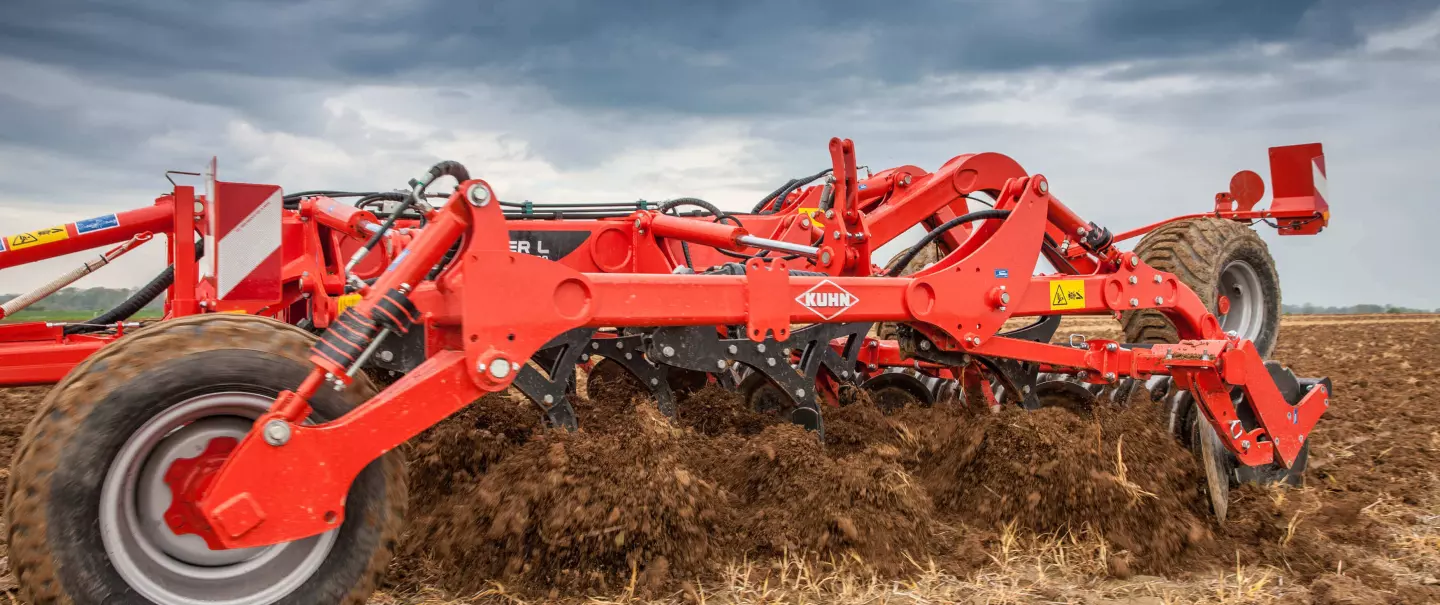
Stubble cultivation advantages
Stubble cultivation provides many agronomic advantages for seedbed preparation such as burying crop residues, keeping weeds under control, managing pests, and improving the structure of the soil....
Stubble cultivation is a shallow tillage method which consists of pulling up and burying emerged plants and fallen seeds, as well as stubble from fallow land, uncultivated land, an intermediate crop, or the previous crop. It takes one or several passes to carry out this operation. Working depth depends on objectives and equipment.
There are many purposes:
Its agronomic value is now well established, which is no doubt why it has grown in popularity in recent years. It is also a cultivation technique that saves time and fuel compared to ploughing, for example.
Throughout history, stubble cultivation has been carried out to bury and mix in crop residues through the depths of the worked soil, following the combine harvester. Straw and residues mixed in with the soil are subject to an initial moistening process before the organic matter is mineralised and decomposed. As a result, there is less plant debris on the surface which deprives certain pests, such as slugs, of shelter in which to reproduce.
Did you know? Two passes with a stubble cultivator reduces the amount of straw on the surface threefold.
Organic soil enriching agents (liquid manure, manure, and compost) are also buried by stubble cultivators.
Stubble cultivation is a means of killing weeds and causing their seeds to germinate which brings them to the surface. Stubble cultivation, therefore, needs to create soil fine enough for germination.
Mechanical weeding requires at least two passes. As part of an overall strategy to limit inputs and reduce herbicides, it is a major lever for killing weeds as they emerge and managing the flora in the rotation by reducing the seed bank in the soil.
Weed biology: Most grasses have a germination capacity that decreases after a year and a maximum life expectancy of a few years, whereas broadleaf weed seeds are often more persistent.
For effective mechanical weeding, the 1st pass with the stubble cultivator should be at a depth of approximately 2 to 5cm, otherwise the seeds could go dormant.
While mechanical stubble cultivation is effective for destroying annual weeds and crop regrowth, care must be taken with perennials not to split the rhizomes of couch grass, bindweed, thistle, and docks, with the stubble cultivator, particularly the version with discs.
Stubble cultivation improves the structure of the soil and aerates it. A pass with a stubble cultivator prevents slaking, increases the soil’s water-retention capacity and deeper water infiltration. By disrupting the capillary continuity of the surface soil, stubble cultivation reduces water evaporation from the soil.
In rainy weather, and especially during violent storms, water penetrates into the soil better when the field has been worked by a stubble cultivator. The tool also partly eliminates the problem of packing caused by harvesting machines.
The soil is thus aerated and supplied with water to boost biodiversity.
The different types of stubble cultivation:
Different machines are suitable and should be chosen according to soil type, weather conditions, and the required result:
Stubble cultivators with independent discs, aka « cover-crop », are robust, efficient, and very versatile tools. They adapt to all soil types. The soil-levelling discs at the back of the machine produce well-levelled soil, even in large amounts of residues. They are especially effective in dry conditions as well as in the spring, and can also prepare the seedbed. Stubble cultivators with independent discs are made for intermediate tillage at shallow to medium depths.
Find my future stubble cultivators with discs
Stubble cultivators with tines are very effective for splitting straw, loosening the soil, and pulling up roots. The tines are capable of shallow or deep work after harvest. They are positioned in rows and coupled with shares or points to work surface stubble, loosen the soil deep down, and even for seedbed preparation and intensive straw mixing. Depending on soil type, location, and humidity, the shares and points should be checked for wear.
Give stubble cultivators with tines a try
In practice, it may be a good idea to alternate between discs (to cut weeds) and tines (to uproot weeds).
Some machines are multi-purpose with rows of discs and tines (the PERFORMER range). The discs cut residues and roots while the tines mix the residues in deep down.
Get more insights: What are the advantages of carbide points for your stubble cultivators with tines?
Stubble cultivation is effective when it meets farmers’ objectives: burying residues, controlling weeds, loosening the soil, preparing the land for the next crop, etc.
Good stubble cultivation should create fine surface soil to encourage germination. In this case, it is advisable to till as soon as possible after the harvest (with cereals) to reap the benefit of the cool soil. An OPTIMER-type tool with discs can be used for shallow cultivation to around 5cm. It is also possible to use a tool like the PROLANDER with fairly light tines.
In this case, the stubble cultivator needs to be capable of scalping the soil and uprooting weeds. A tool with tines that can work at depths of 5 to 10-12cm to reach the roots. Tine tools from the PROLANDER or CULTIMER ranges meet these requirements.
In this case, the stubble cultivator should facilitate straw decomposition. Tools with discs, such as in the OPTIMER range, that work at depths of between 5 and 10cm will ensure that vegetation is mixed in well.
Tools equipped with tines or discs can be used to work the surface of the field to 5cm deep. To optimise the operation, combining it with a roller is recommended in order to close the soil. Most KUHN stubble cultivators are equipped with rollers.
It is possible to mix straw deep into the first 20 centimetres of the soil to ensure better decomposition, using tine tools such as the CULTIMER or Performer. This is usually done before planting a spring crop, or sometimes in the autumn before planting a winter crop. In order to loosen plough pans and compacted soil, caused by tractor wheels, stubble cultivators such as the CULTIMER, Performer or the DC Sub Soiler can be used. Their finer rows of tines can work to depths of 30 to 35cm.
Stubble cultivation and seeding at the same time: to save time and fuel, seeding can be carried out at the same time as stubble cultivation. This practice is developing particularly for planting inter-crops in the autumn. Machines with discs and tines as well as a roller are suited to this type of operation.
Stubble cultivation is mainly carried out in the summer after harvesting cereal crops and rapeseed, as well as in the autumn after maize. The objective is to facilitate the decomposition of stubble, combat weeds and slugs, and make it easier to plant the next crop. As well as regenerating the soil, stubble cultivation reduces the need to use herbicides.
This cultivation method is developing for autumn operations to prepare the land for cover crops or even cereal crops planted using Minimum Tillage Methods.
Soil and weather conditions permitting, plant cover can be destroyed at the end of winter. This protects the soil for longer and increases the amount of biomass to bury, returning more nutrients to the soil. If the soil has settled sufficiently, a stubble cultivator can be used to destroy plant cover. It may be necessary to pass with a shredder first if there is a lot of cover.
In spring, tillage operations structure the soil and prepare for spring sowing by accelerating soil warming.
To sum up, stubble cultivation is no longer limited to the sole objective of burying stubble by shallow cultivating. The technique also traps nitrates in the soil for the future crop by mixing in residues.
During the summer season, it is advisable to keep a tractor-mounted stubble cultivator close to the field in case a firebreak is needed. It will restrict fires by reducing flames.

Stubble cultivation provides many agronomic advantages for seedbed preparation such as burying crop residues, keeping weeds under control, managing pests, and improving the structure of the soil....

Stubble cultivation is a shallow or deeper tillage technique (1 to 15cm) carried out with a mechanical tool, the stubble cultivator, hitched to a tractor. The tool is mainly used by famers for managin...
